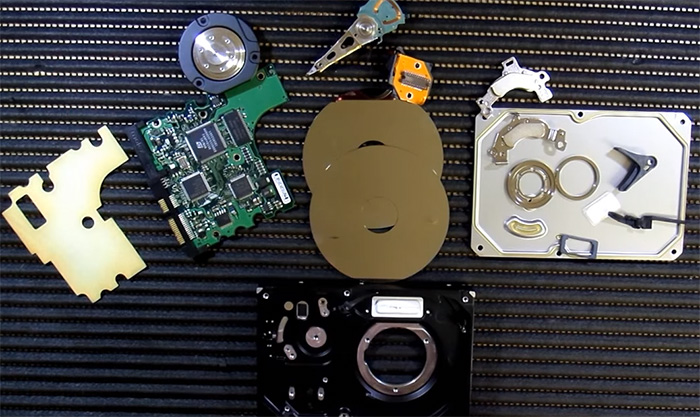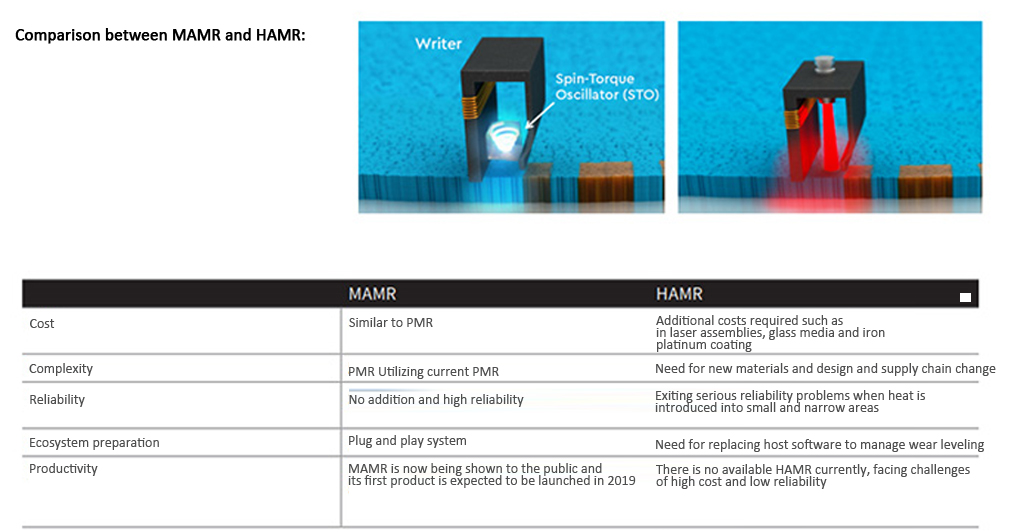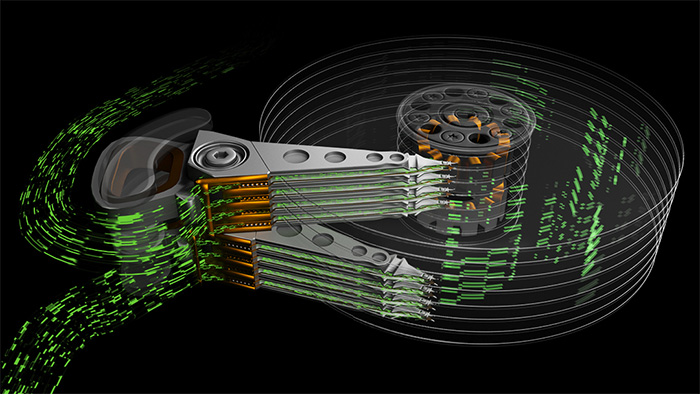Toshiba will release 10-disk HDD, when 30 TB HDD above is more suitable for HAMR.
Because of the price reduction of NAND flash memory, SSD are very cheap now. Considering that NAND will continue to reduce prices this year, it is not hopeless to popularize 1 TB SSD by the end of 2019. SSD will obviously further erode the consumer market and high-performance storage market of HDD, but HDD is still indispensable in areas requiring large capacity. In order to further improve the capacity of HDD, Western Digital, Seagate and Toshiba have spared no effort. Toshiba is developing 10-disk HDD. However, in terms of future technology, Toshiba and Western Digital choose MAMR, and Seagate chooses HAMR. It is expected that 40TB hard disks will be available in 2025.

Hesise, a Germanic website, has reported some new trends in HDD. RainerKäse, manager of Toshiba, introduced related content at the Cloudfest exhibition. He mentioned that Toshiba is developing 10-disk HDD. Prior to that, Toshiba was also the first company to release 9-disk HDD. They have used 9 disks on MG08 series hard disks with a maximum capacity of 14TB.
Seagate and Western Digital only have 8-disk HDD, but their products also reach 14TB capacity, except that they chose to use helium-filled technology.
For HDD, the more disks, the larger capacity, but the corresponding system structure will be more complex. Current mainstream is up to 8 disks, and the thickness of 3.5-inch HDD can be controlled around 26 mm.
In 2017, Japanese Hoya introduced 8-disk glass substrates. Previously, they said they would launch 9- disk and 10- disk glass substrates in the next few years, eventually reaching 12 disks.
Toshiba's 10-disk technology is not the only one. RainerKäse said they can do it, as can other manufacturers.

In addition to increasing number of disks, HDD’s capacity will ultimately depend on more advanced technology. For example, there are two methods, HAMR and MAMR. The difference between the two can be referred to the table above.
For both methods, Seagate supports firmly HAMR and has launched 16 TB HAMR samples, whose reliability and performance are good. The first generation of HAMR will not be sold on the market, while the second generation with 20TB capacity will be listed officially by the end of 2020 or 2021.
Toshiba and Western Digital are more inclined to MAMR. Western Digital expects to launch 40TB HDD in 2025, when MAMR HDD is available within this year. However, specific products for the consumer market are uncertain.
Toshiba also relies on MAMR technology, but this is only their transitional choice. RainerKäse said that HAMR technology is more suitable for 30TB HDD above, but it is not yet ready for the market.
Toshiba expects to launch MAMR HDD this year, and only a small number of customers are able to test it.

In addition, Seagate also demonstrated the multi-arm drive technology at Cloudfest, that is, there are two sets of servers to drive HDD. The design can double the performance of HDD, not only in read and write speed but also in random performance, although the IOPS is not much different.
